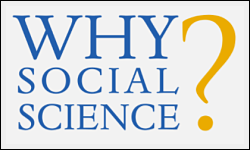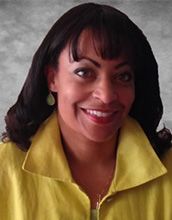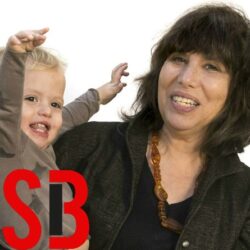Why Social Science? Because It Can Help Fight Stereotypes in the World of Science
The insidious negative effects of racist stereotypes on African Americans’ academic performance was described in The Atlantic in 1999 by former National Science Board member and social psychologist Claude Steele in “Thin Ice: Stereotype Threat and Black College Students.” The research that Steele referred to throughout the article was conducted during the 1990s and published in several well-respected peer-reviewed outlets. It made a splash and spawned an entire branch of research on the various ways that negative stereotypes deleteriously impact their targets.
As an assistant professor of psychology at that time, Steele’s work resonated strongly with me on both personal and professional levels. While delighted to be a member of what was then a top nationally ranked psychology department, I was acutely aware of my status as the only African American member among the 60-plus faculty in the department. I routinely encountered other faculty and graduate students who openly questioned my professional credentials and legitimacy, and even wondered aloud about whether I had what it took to be successful. It was not just that I was a young woman or that I was an African American. It was what I represented in toto, including the confidence and grit I needed just to be present, that most seemed to vex my detractors. So, in addition to managing the expected pressures of being an assistant professor within a research-intensive setting, I also worked hard to counter the stereotype-based expectations of inferiority that a considerable number of people held about me.
Optimism despite failure
My own research over the years has explored the performance pressures and cognitive consequences of having solo status in a task-performing group; the effect of being a member of a group that is collectively new to an organization; as well as the various ways that group composition can facilitate or hinder group performance, among other things. What I most enjoy about that work is the extent to which it is possible to identify certain observations about human behavior and then use those insights to cultivate a plan or a strategy for better interpersonal interaction and more harmonious group processes.

A common thread of my work and that of the nearly $10 million research investment within NSF’s Science of Broadening Participation program, is a focus on understanding the conditions necessary for inclusion and strategies for expanding opportunity. In 2008, NSF’s Social, Behavioral and Economic Sciences Directorate convened its first workshop to synthesize decades’ worth of existing research addressing ways to effectively broaden participation in STEM educational attainment and workforce development. Eight years later, in 2016, that activity was followed by an NSF-supported symposium that went beyond merely identifying and assembling findings, to establish an ambitious research agenda for scientists across the country to explore strategies to bring more minority students into STEM fields.
Now more than ever, that research is clearly critical. It has shed light on enduring mysteries about how people from widely different backgrounds can work together effectively to achieve common goals. As a result, we know that having a shared group identity helps people get along – whether in work groups, neighborhoods or entire nations. And, we know that emphasizing the things people have in common, rather than their differences, goes a long way to engendering the necessary esprit de corps for civic engagement, community building and cooperative social interactions.
I do not normally consider myself to be an optimist. But I realize that in writing this, at a very fundamental level, I am. Despite our generation’s collective failure to leverage what we know about people’s hearts and minds to become a better, kinder and more just society, I continue to believe in the value of science to advance our understanding of what works (and what doesn’t work) in our efforts to increase the diversity and quantity of participants in the U.S. science enterprise.
This idea has taken hold of me and motivates much of my work within the U.S. National Science Foundation.
Institutions that do without
Most forecasts of the future STEM enterprise in the U.S. paint a sobering picture. Increasingly fewer students enter STEM fields each year, with declining numbers among the white, middle-class students who have traditionally filled the majority of STEM roles. This impending future, coupled with increasing challenges for immigrant participation in the U.S. STEM enterprise, underscores the importance of welcoming STEM participants from groups that have not historically participated in large numbers. According to the 2019 Women, Minorities and Persons with Disabilities in Science and Engineering Report from NSF’s National Center for Science and Engineering Statistics, although African Americans and Hispanics together make up roughly a quarter of the U.S. population, their presence in STEM fields compared to their white counterparts remains far less.
To be clear, however, it is not only individuals from minority groups that are underrepresented in many of our nation’s labs and classrooms. There are also many minority-serving institutions of higher education that have never been recipients of NSF funding. And yet, those institutions continue to disproportionately educate, train and graduate ethnic minority students; the very students who can help us to strengthen America’s future in STEM.
According to the most recent report on NSF’s merit review process, more than 70 percent of NSF funding in fiscal year 2018 went to about 100 universities. While that elite group includes several research-intensive Hispanic-serving institutions, it does not include any historically Black colleges or universities or any tribal colleges or universities. Institutions that do not typically receive financial support for research often lack the resources needed to establish labs, recruit strong faculty and support graduate students. Among those colleges and universities, it is minority-serving institutions that are heavily represented. This is akin to a self-fulfilling prophecy in that those which have obtained very little or no federal support lack the resources necessary to effectively compete for federal support.
Build and Broaden
As the deputy assistant director of NSF’s Social, Behavioral and Economic Sciences directorate, my colleagues and I looked inward as we considered the small number of financial awards that our organization makes each year to minority-serving institutions. As a result, we launched Build and Broaden, a funding opportunity inviting proposals aimed at fostering partnerships and kick-starting research collaborations in the social, behavioral and economic sciences among minority-serving institutions while enhancing the research infrastructure and capacity of those institutions.
Our minority-serving institutions continue the mission of supporting and training many of our nation’s future scientists and engineers. But with additional resources and funding, they can do so much more.
I encourage the faculty and staff at our nation’s many historically Black colleges and universities, Hispanic-serving institutions, tribal colleges and universities and others that serve minority students, to engage with NSF’s Build and Broaden program and learn how you can submit a proposal.
And above all else, I hope that you will use your confidence and grit to overcome stereotypes and pursue the scientific work that calls you.































































































